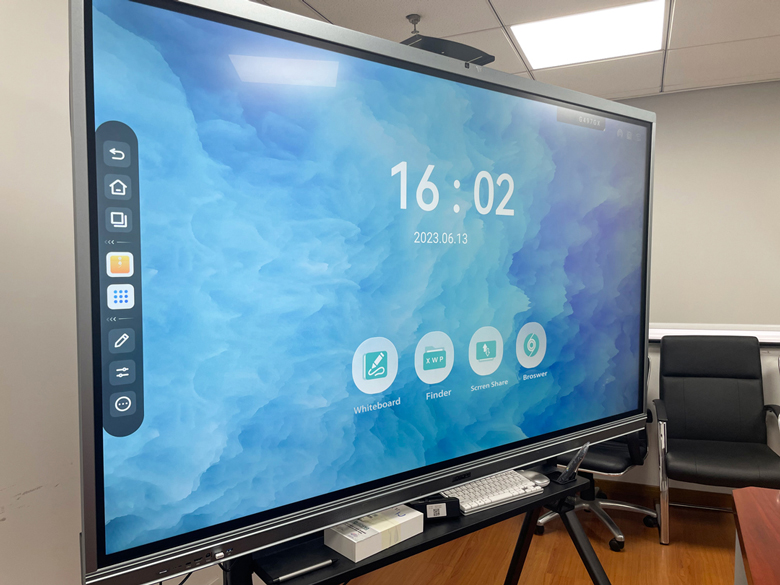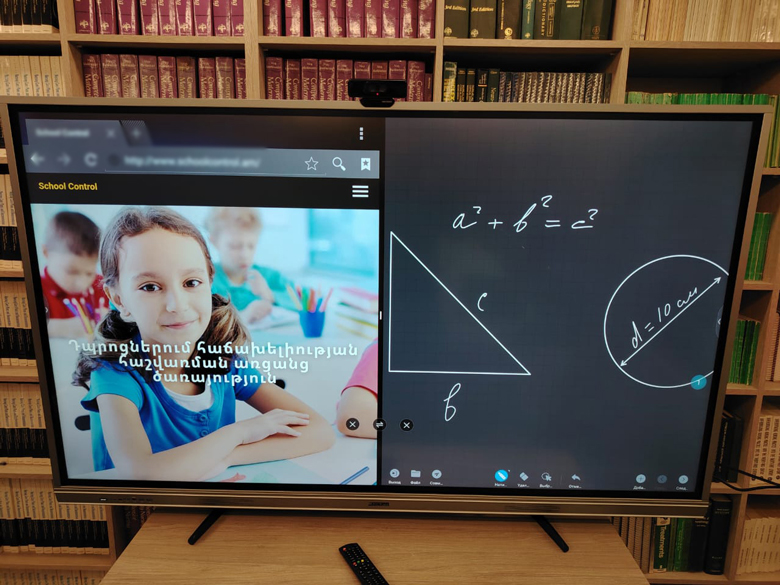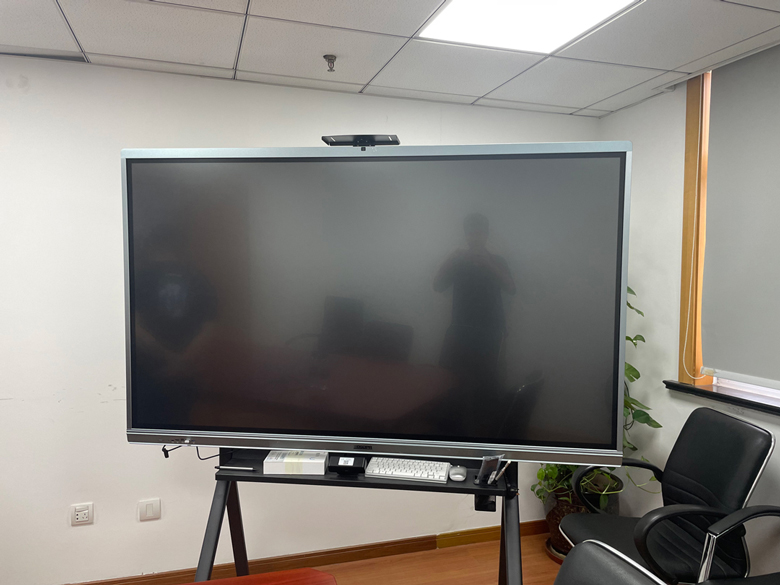
Nowadays, more and more company conference rooms have quietly replaced traditional projectors and whiteboards with smarter, more powerful conference flat panels. Conference flat panels not only enhance the high-end feel of meetings but also realize multifunctional displays of documents, videos, and pictures, allowing for whiteboard sharing, editing, and interaction, significantly improving meeting efficiency. This new type of "smart conference flat panel" is an important tool for internal communication in enterprises, promoting team collaboration and improving work efficiency.

When purchasing an conference flat panel, the core functions should be the primary focus. For companies that need remote meetings, the configuration of the camera and microphone is especially critical. An ideal conference flat panel should be equipped with a high-pixel camera to ensure clear video call quality. Meanwhile, a high-quality microphone ensures clear sound transmission, avoiding communication barriers. For example, the DSPPA 65-inch conference flat panel not only comes with a 48-megapixel camera but also has a high-quality optical lens, ensuring excellent picture quality with very low image distortion. In addition, this conference flat panel features intelligent tracking and recognition functions that automatically adjust the camera angle according to the dynamic changes of participants, ensuring that each participant remains in the best position on the screen.
Conference flat panels have a major advantage in their writing function, but many users often only consider the surface-level "can write". In fact, the smoothness of writing, the function of the touch pen, and the richness of the whiteboard all directly affect the meeting experience. Excellent conference flat panels use low-height infrared touch technology, which not only enhances the smoothness of writing but also eliminates issues like lag or broken lines. This design reduces the gap between the screen and the glass, ensuring a more responsive touch, thereby enhancing the user experience.
At the same time, the hardware configuration of conference flat panels is also very important. Considering their usage span of four to five years, it is necessary to ensure that their configuration is advanced and redundant when purchasing to guarantee the fluency of daily use and avoid lagging.

When choosing an conference flat panel, the screen size is another key factor. A large screen can enhance the display effect, but an excessively large screen may increase the weight and size of the device, affecting mobility. Therefore, it is crucial to choose an appropriate screen size according to the size of the conference room and usage needs.
In addition, the stability and ease of use of the operating system are also essential elements that cannot be ignored. Choosing a system that users are familiar with and easy to operate can effectively reduce training costs and improve usage efficiency. At the same time, connectivity and interfaces are important factors to consider when purchasing. A good conference flat panel should have multiple connection interfaces such as HDMI, USB, and Bluetooth to meet the needs of different external devices.

Finally, long-term support and after-sales service should also be considered. Choosing a conference system supplier with a good reputation can provide timely support and guarantee for problems encountered in subsequent use. Overall, purchasing a cost-effective conference flat panel requires comprehensive consideration of screen size, operating system, connectivity, and after-sales service, as these factors directly affect the meeting's usage experience and efficiency.
Through these suggestions, we hope to help you make an informed decision when purchasing an conference flat panel, improve meeting efficiency, and achieve better communication and cooperation.